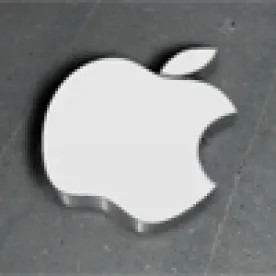In its Opinion, the United States Court of Appeals for the Federal Circuit dismissed the appeals of Petitioner, Achates, appealing the Board’s Final Written Decisions in IPR2013-00080 and IPR2013-00081 finding claims 1-4 of the ’889 patent and claims 1-12 and 17-19 of the ’403 patent unpatentable. Achates appealed the Board’s decisions on the basis that the petitions were time-barred under 35 U.S.C. § 315(b), and the Board therefore acted outside of its statutory authority. Achates also appealed the Board’s denial of its motion for discovery.
Achates argued at the Board that Apple’s Petition is time-barred because Apple’s co-defendants in a patent infringement suit brought by Achates were actually real parties in interest with respect to the Petition or were in privity with Apple. The co-defendants had been served with the complaint for infringement more than one year before the Petition was filed and were therefore time-barred, but Apple was served with its complaint less than one year before the Petition’s filing. Achates relied upon a blank indemnification agreement between Apple and co-defendant QuickOffice as allegedly establishing privity or real party in interest, and moved for additional discovery into real party in interest on the same basis.
The Board found that the co-defendants were not real parties in interest or in privity with Apple and denied Achates’s motion for discovery. The Petitions were instituted, and the challenged claims subsequently found unpatentable. On appeal, Achates only challenged the Board’s denial of its motion for discovery and its conclusion that the Petitions were not time-barred.
The Court first reviewed the relevant statutory provisions regarding appealing decisions of the Board. According to 35 U.S.C. §§ 314(d) and 324(e), respectively, “[t]he determination by the Director whether to institute [IPR or CBMR] under th[ese] section[s] shall be final and nonappealable.” In contrast, pursuant to 35 U.S.C. §§ 319 (IPR) and 329 (CBMR), “part[ies] dissatisfied with the final written decision of the Patent Trial and Appeal Board under section[s] [318(a) or 328(a)] may appeal the decision pursuant to sections 141 through 144.” Moreover, the Federal Circuit noted that 35 U.S.C. § 141(c) states
A party to an inter partes review or a post-grant review who is dissatisfied with the final written decision of the Patent Trial and Appeal Board under section 318(a) or 328(a) (as the case may be) may appeal the Board’s decision only to the United States Court of Appeals for the Federal Circuit.
The Court also discussed other Federal Circuit opinions holding that the Court lacked jurisdiction to hear appeals of institution decisions. In particular, the Court cited In re Cuozzo Speed Techs., LLC, 793 F.3d 1268 (Fed. Cir. 2015), in which the Court held that the “reviewability prohibition” of Section 314(d) is not limited to interlocutory appeals and applies where the appeal of the institution decision is taken after the Board’s final written decision.
The Court also discussed Versata Dev. Grp., Inc. v. SAP America, Inc. (“Versata II”), 793 F.3d 1306 (Fed. Cir. 2015). In Versata II, the patent owner Versata appealed the Board’s determination that its patent qualified as a covered business method patent for CBM review after the Board’s final written decision. The Court held that while institution decisions are not appealable, the determination of whether a patent qualifies as a covered business method patent “was necessarily implicated in the final merits determination and was appropriate for review because of the fundamental limitation of the Board’s ‘ultimate invalidation authority’ in a CBMR to those patents that meet the CBM definition.”
Achates argued that, in the present case, a time-barred petition “goes to the Board’s ultimate authority to invalidate the patents, and therefore, under Versata II, is reviewable under § 319.” The Court disagreed, finding that Versata II was limited to its unique circumstances. In particular, the Court found that Section 315(b) “does not impact the Board’s authority to invalidate a patent claim—it only bars particular petitioners from challenging the claim.” In addition, the Court noted that the time limitation does not apply to joinder under subsection (c). Therefore, “the timeliness issue here could have been avoided if Apple’s petition had been filed a year earlier or if a petition identical to Apple’s were filed by another party,” in contrast to the situation in Versata II, where “no proper pleading [] could be filed to bring it within the [Board’s] § 18 authority.”
In addition, the Court distinguished the time-bar from Versata II because qualification as a covered business method patent was “the ‘defining characteristic’ of the Board’s ‘authority to invalidate’ a patent in the specialized CBMR process.” However, the time-bar is not such a defining characteristic, but is rather merely a rule for orderly progress of litigation.
Achates also argued that the Board’s reaffirmation of the time-bar determination in its final written decision made the determination appealable. The Court disagreed, finding that the overlap is not determinative (citing Versata II) and that the reconsideration of the time-bar can still be characterized as part of the institution decision.
Achates finally argued as a matter of statutory interpretation that the prohibition in Section 314(d) applied only to that section. However, the Board disagreed with Achates’s interpretation and found it to be contradicted by precedent. In particular, the “words ‘under this section’ in § 314 modify the word ‘institute’ and proscribe review of the institution determination for whatever reason.”
Thus, the Court held that Section 314(d) prohibits review of the Board’s determination regarding the time-bar of Section 315(b), even where the Board reconsiders its determination as part of the final written decision. The Court further held that “the Board’s institution decision does not violate a clear statutory mandate,” and therefore, the exception for ultra vires agency action does not apply.
Achates Reference Publishing, Inc. v. Apple Inc., No. 2014-1767, No. 2014-1788
Dated: September 30, 2015
Appeal From: IPR2013-00080; IPR2013-00081
Before: Judges Prost, Lourie, and Linn
Written by: Linn



 />i
/>i

